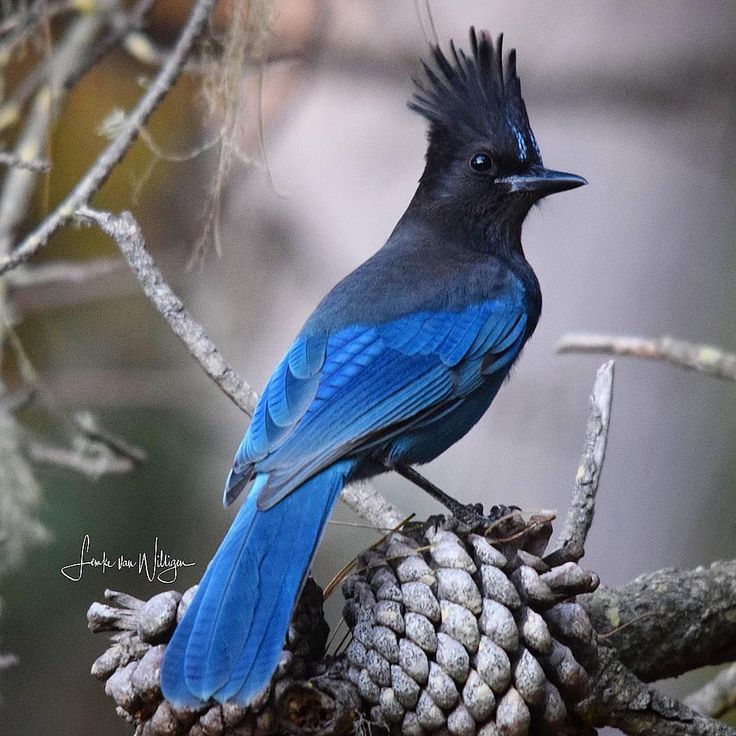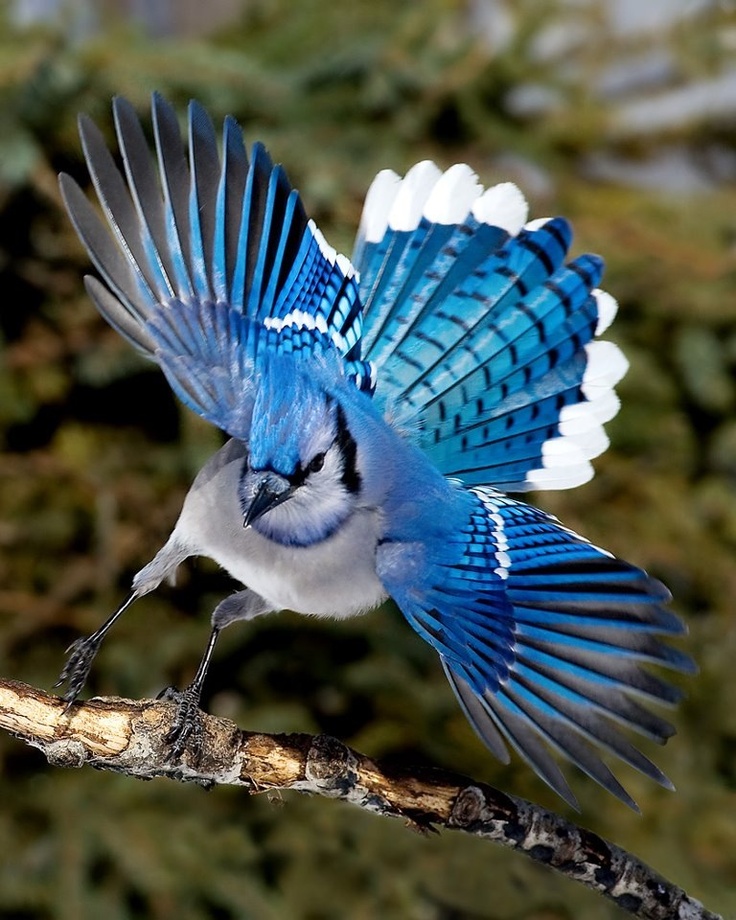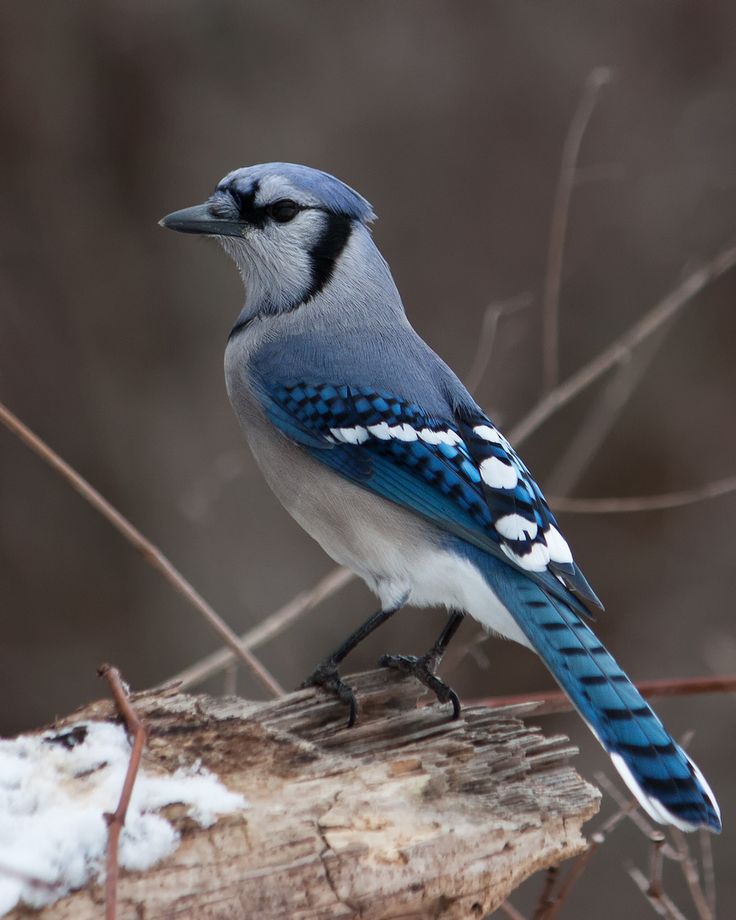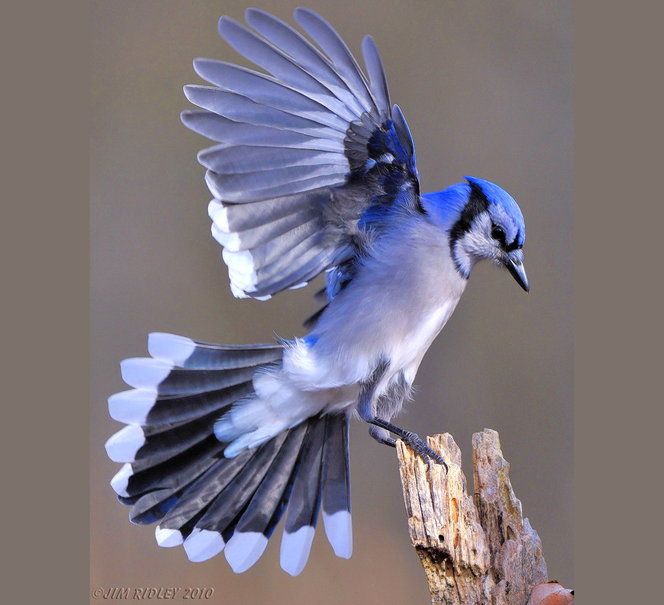Feed baby blue jay
Baby Blue Jays: All You Need To Know
What does a baby Blue jay look like?
How big are baby Blue jays?
Why do you never see baby Blue jays?
What is a baby Blue jay called?
What do baby Blue jays eat?
Do both parents feed baby Blue jays?
What do Blue jay eggs look like?
How long do Blue jay eggs take to hatch?
How many babies does a Blue jay have?
When do Blue jays lay eggs?
How do Blue jays feed their chicks?
How long do baby Blue jays stay with their parents?
Do Blue jays have helpers?
Blue jays (Cyanocitta cristata) have beautiful cobalt-blue plumage and distinctive head crests - they’re the most colorful of all the corvids and one of the most recognisable birds in North America.
Like all corvids, Blue jays are intelligent and resourceful, but what about baby Blue jays? This is a guide to everything you need to know about baby Blue jays!
What does a baby Blue jay look like?
Baby Blue jays are tiny when they hatch and are mainly grey with faint shades of yellow and pink. They’re blind with closed eyes and may be covered in small featherless naked patches.
At hatching
Baby Blue jays are mostly feathered when they hatch but may have naked featherless patches. They’re predominantly grey with pink/yellow plumage on their underside. Their eyes are shut and don’t open for the first 4 to 5 days.
While baby Blue jays will only squirm on their first day, they can shuffle around the nest by day 2. Blue jay hatchlings are tiny, just 50mm long or so.
Blue jay feeding chicks in the nest
Growth and development
Blue jays grow rapidly in their first five days, and their plumage gets noticeably darker, turning to olive. Blue feathers don’t start breaking out until day 14 or so and continue to grow until day 20 or so, at which point the jay fledges.
Full blue plumage development isn’t complete for another month or so after fledging. However, juvenile Blue jays are relatively easy to identify by their blue-grey plumage and buff, fluffy feathers.
A pair of recently fledged blue jays
How big are baby Blue jays?
Baby Blue jays weigh around 5.5g at hatching with a body length of just 51 mm. By the fifth day, Blue jays already weigh approximately 20 to 28g and measure about 76 mm.
Why do you never see baby Blue jays?
Baby Blue jays won’t leave the nest for 17 to 22 days but are unable to fly for another week or so after fledging.
Once fledged, the chicks remain close to their parents. The parents often relocate away from the nest while staying within the confines of deep treetop foliage.
Blue jay fledglings are vulnerable and are pretty easy to spot if they’re roaming around on the ground. However, if you spot one, its parents are probably watching it (and you!) from a treetop perch, so think twice before touching or relocating it.
A blue jay fledgling on the ground
What is a baby Blue jay called?
There is no specific name for baby Blue jays. Just after they hatch, Baby Blue jays are called hatchlings. Then, they develop into nestlings while they spend all of their time in the nest. Finally, baby Blue jays become fledglings, juveniles, and fully grown adults.
Then, they develop into nestlings while they spend all of their time in the nest. Finally, baby Blue jays become fledglings, juveniles, and fully grown adults.
What do baby Blue jays eat?
Baby Blue jays eat whatever their parents bring them, including insects, berries, seeds and grains. While Blue jays also eat meat in the form of small animals and other birds, the young are unlikely to be able to digest it. Soft foods are preferable.
In the first few days after hatching, the male provides the vast majority of food, but the female will join if his haul is insufficient. Then, after a few days, the female typically joins the male to forage more feed for the hungry chicks.
After that, the male usually feeds the nestlings too, but the female has been observed reaching into the chicks’ mouths and redistributing food.
A blue jay feeding one of their chicks
Do both parents feed baby Blue jays?
In the first few days after hatching, the male does most of the foraging and feeds the nestlings. However, the female will often forcibly redistribute food by reaching into the nestlings’ mouths.
However, the female will often forcibly redistribute food by reaching into the nestlings’ mouths.
After around 4 to 5 days, the female typically joins the male. As the birds approach fledging, both birds feed the chicks. Parental feeding carries on for a week or two after the baby Blue jays fledge.
What do Blue jay eggs look like?
Blue jay eggs typically measure 28 mm x 20 mm and are predominantly ovular. colors vary from shades of blue, to green, olive and light brown.
They’re spotted or blotched with brownish markings, mainly towards the larger end. So while Blue jay eggs look similar to most corvid eggs, they vary a lot, especially regarding their color and shape.
A juvenile blue jay, perched on the fence
How long do Blue jay eggs take to hatch?
Blue jay eggs are incubated for around 17 to 18 days before hatching.
How many babies does a Blue jay have?
Female Blue jays typically lay between 2 to 7 eggs, but 4 to 5 is more common. It would be rare for all chicks to survive until adulthood.
It would be rare for all chicks to survive until adulthood.
When do Blue jays lay eggs?
Blue jays almost solely lay eggs in the months of March, April and May.
May egg-laying usually only occurs in the north, or when it’s particularly cold. In the south, egg-laying may start as early as early March, but rarely earlier.
- Michigan: early May
- Minnesota: late April
- Kentucky and Kansas: Mid April
- Arkansas: late March
- Florida: Early March
Three Blue Jay fledglings perched in a tree together
How do Blue jays feed their chicks?
Blue jay parents are presumed to partially regurgitate harder foods into the chicks' mouths, but probably feed most foods to the chicks whole. Larger pieces of food will be torn up before feeding.
Baby Blue jays are fed with berries, insects and seeds. Insects are ideal as they’re soft and high in protein and fats.
How long do baby Blue jays stay with their parents?
Blue jays fledge after just 17 to 21 days after hatching in most cases, but they’ll stay very close to the nest (within 25m or so usually) for another 2 to 3 weeks.
After that, young Blue jays usually stay within the family unit for another 2 to 3 months, at which point they’ve grown out most of their adult plumage and fly off to establish independent territories. Baby Blue jays often continue to harass their parents for food long into summer.
Close up of a baby blue jay
Do Blue jays have helpers?
Helpers are single unpaired birds that help a pair of birds with everything from nest building and incubation to brooding and feeding.
Blue jays sometimes have nest helpers, though this is rarer than it is for other Corvids, e.g. crows.
Blue jay helpers have been observed helping build the nest and feeding the young. It’s unclear whether they’re related to the pair (e.g. last year’s young), or whether they’re unrelated.
Expert Q + A
Question
When are baby blue jays most vulnerable to cats?
BirdFact Team
Generally speaking, baby blue jays are most likely to be predated by cats when they are in the nest - particularly whilst on the rim of the nest, and for the first few days after they fledge the nest.
Blue Jays can be pretty aggressive when it comes to defending their nests, which can often scare the predators away. With cats, similar to other predators, the parents usually will mob the cat in an attempt to scare it away and protect their young.
Ask a question
Do you have a question about this topic that we haven't answered? Submit it below, and one of our experts will answer as soon as they can.
How to Feed Wild Baby Blue Jays
By Laura Wallace Henderson | Updated September 26, 2017Things You'll Need
Blue jay food
Fresh berries
Raw nuts
Canned pet food
Eye dropper
Plastic drinking straw
Blue jays are brightly colored, blue birds known for their unusual color. Blue jays are commonly found in the central and eastern United States and in southern Canada. Blue jays like to live in clearings, near wooded areas and buildings. Baby blue jays normally stay with their parents for their first two months of life. They are often able to start finding their own food when they are just a few weeks of age. Very young blue jays require assistance when abandoned by their parents. You may need to assist a baby blue jay by feeding him until he is old enough to feed himself.
They are often able to start finding their own food when they are just a few weeks of age. Very young blue jays require assistance when abandoned by their parents. You may need to assist a baby blue jay by feeding him until he is old enough to feed himself.
i Jupiterimages/Comstock/Getty Images
Check with your local farm supply store for commercial blue jay food. Some pet stores also carry prepared blue jay food. Purchase a small quantity of this ready-made food to try on your new baby bird. Soften this food with water for feeding to immature birds. If you cannot find packaged blue jay food, make your own blend from scratch.
i Jupiterimages/Photos.com/Getty Images
Select a variety of fresh food for preparing your own blend of baby blue jay food. These birds are omnivorous, meaning they consume food from plant and meat sources. Select raw, unsalted nuts and soft grains for your rescued baby bird. Berries should be fresh or frozen, not canned. Purchase produce that has not been subject to chemical processing. Thoroughly wash all fresh produce. Use canned cat or dog food as an animal protein source for your baby blue jay.
Thoroughly wash all fresh produce. Use canned cat or dog food as an animal protein source for your baby blue jay.
i Ryan McVay/Photodisc/Getty Images
Select an object shaped like the beak of a mother blue jay. A pointed eye dropper works for this purpose. You can also trim the tip of a plastic drinking straw into a slight point to use to feed the baby bird. Grind your ingredients into a smooth gruel. Add a little water to produce a soft consistency. Place a small amount on the tip of your straw or dropper. Baby birds open their mouths very widely when it is time to eat. Gently and quickly press the food to the back of the baby’s open mouth. Do not press down the throat. Allow the baby blue jay sufficient time to swallow the food.
Be prepared to feed the baby bird often. Depending on his age, he may need to eat every two to three hours.
References
- University of Michigan, Museum of Zoology
- National Park Service
- Orphaned and Injured Birds – The Center for Rehabilitation of Wildlife
Photo Credits
Writer Bio
Laura Wallace Henderson, a professional freelance writer, began writing in 1989. Her articles appear online at Biz Mojo, Walden University and various other websites. She has served as the co-editor for "Kansas Women: Focus on Health." She continues to empower and encourage women everywhere by promoting health, career growth and business management skills.
Her articles appear online at Biz Mojo, Walden University and various other websites. She has served as the co-editor for "Kansas Women: Focus on Health." She continues to empower and encourage women everywhere by promoting health, career growth and business management skills.
habitats of black-headed, shrubby, saxaul and Yucatan varieties
Blue jay is a bird that fascinates with its beauty and unusualness. She has a bright color and a blue comb on her head. Its main habitat is the USA and Canada. To date, there are about 44 species of this bird.
Contents
Blue jay - description, history of the breed
The bird belongs to the crow family, and its distinctive feature is a rich blue crest, thanks to which it got its nickname "crested". Male jays are slightly larger than females, but sexual divergence does not affect color in any way. nine0003 Blue Jay
Interesting fact! Those who have had the opportunity to hold a bird claim that it only looks blue from a distance, but in fact the structure of the feathers gives it color. When light enters them, it is refracted there, which creates a blue glow.
When light enters them, it is refracted there, which creates a blue glow.
The length of the birds is about 30 cm, but their wingspan during the flight reaches 42 cm. They have a small weight - only up to 100 g. white wings and tail. nine0003 Black-headed Blue Jay
American Blue Jays have strong beaks that can crack even the hardest nuts. There are several varieties of the bird:
- Black-headed blue jay. Its habitat is the mountain slopes and coniferous groves of America. It is distinguished by its thin beak and slightly larger crest. The upper part of the body is black, the lower part is dark blue, and white stripes are visible in the forehead.
- Blue scrub jay. It differs slightly from other varieties of birds in its color - fluffy feathers, the belly and chest are gray, and the head, wings and tail are blue. Today it is listed in the Red Book, because it is at the stage of extinction due to frequent fires. Florida is her permanent home. nine0021
- Saxaul jay.
 The habitat of the bird is Mongolia. Basically, she settles in the bushes in the middle of the desert. Its big difference from other birds is the ability to run and jump quickly, but it is very bad at flying.
The habitat of the bird is Mongolia. Basically, she settles in the bushes in the middle of the desert. Its big difference from other birds is the ability to run and jump quickly, but it is very bad at flying. - Yucatan jay. Quite a rare, endangered species. To date, little is known about them due to their increased shyness. In front, the plumage of birds is completely black, but behind it is blue. Birds live in the ruins of Mayan cities. nine0020 Black-headed magpie. She lives in Mexico, and in her appearance is very similar to forty. The feathers are distinguished by a blue color from above, but from below the bird is white, it has black blotches on its face and neck. If you watch this species of birds, you will notice that they eat like people, holding food in one paw and standing on the other.
- Altai jay. Unlike all previous species, these birds do not shy away from people, but rather willingly make contact. Their habitat is Thailand. Young individuals are striped in color, but with age they become completely black with a small white stripe on the neck, and on their head there is a large and beautiful crest.
 nine0021
nine0021
Bird habitat
The North American blue jay can be found in parks, gardens, deciduous forests (mixed, oak or beech), and in residential areas. In the western part of the mainland, birds settle mainly in pine forests or shrubs.
Keeping at home
If you are going to have a blue jay at home, you should remember that it will not work to tame an adult bird, so you need to buy a chick. But it will be quite difficult to grow it, so you need to feed the baby every half hour. nine0003
Important! Keeping some types of jays in pairs is prohibited because they do not like competition and will constantly put up fights.
The cage for the blue jay should be as spacious as possible, but it will not be able to stay in it all the time, so the bird must be released daily for several hours. For convenience, it is better to purchase an aviary.
Home aviary To maintain the luxurious plumage of a bird, it is necessary to spray it regularly with a spray bottle of warm water. With the right content at home, birds can live for about 18 years. nine0003
With the right content at home, birds can live for about 18 years. nine0003
Reproduction
With the onset of heat, the mating season begins in jays. It mostly falls in May-June. A noisy female jay calms down so as not to give out her nesting place to a predator. Both parents work on building a nest for the chicks. They break off small twigs from tree branches and build a nest frame. Basically, it is located at a height of no more than 10 m above the ground in coniferous or deciduous trees.
Some varieties of jays cement their nests with clay or earth, and lay lichen, leaves, paper, or whatever is found in ditches and pits, on the bottom. nine0003
This is interesting! On average, the female lays about 7 eggs with a bright green color and brown spots.
Incubation of eggs lasts for 18 days. After the birth of the chicks, the parents take care of them, feed them, and on the 12th day of their life, the mother herself goes in search of food. On the 20th day from birth, the chicks can fly on their own, but do not move further than 20 m from the parent nest. And by winter they fly away from the nest, breaking off all family ties.
On the 20th day from birth, the chicks can fly on their own, but do not move further than 20 m from the parent nest. And by winter they fly away from the nest, breaking off all family ties.
Diet
It is quite varied in jays. These are various plants, animals, mushrooms. For example, nuts, acorns, caterpillars, beetles, lizards, frogs and even chicks of other birds. In some cases, the blue jay can behave in a boorish way, taking food from others or stealing berries from the beds, for example, cherries, sweet cherries. Not all jays are migratory. Some of them stay over the winter, so they need to stock up on food. And they store them in leaves, in the bark of trees, and even buried in the ground. nine0003
How long they live in the wild and in captivity
Being in their natural habitat, blue jays live for about 7 years, but with a favorable outcome, they live up to 15 years. At home, with proper care, the birds will delight their owners for 20 years. Raising chicks from an early age, birds are very attached to a person and delight him with their ability to reproduce the most unusual sounds.
Raising chicks from an early age, birds are very attached to a person and delight him with their ability to reproduce the most unusual sounds.
The age of a bird can be determined by the color of its eyes. For example, in young individuals, the iris of the eyes is dark brown, but in adults it acquires a light blue color. It is the change of the iris that is the signal for the readiness of mating. nine0003 Food storage for the winter
Fascinating facts about behavior in nature
Jays are good at imitating the voices of other birds, animals, and even some of the sounds that humans create. But in this case, the jay should grow at home and be constantly near the person.
There are many more interesting facts about these birds that you should know:
- A sign of excitement or fear of birds is a tousled crest. In this way, she also tries to create an awesome spectacle and scare the predator. nine0021
- Although there are many types of jays in nature, each of them differs in behavior.
 For example, some birds are monogamous, while others prefer complete solitude.
For example, some birds are monogamous, while others prefer complete solitude. - Not all members of the species are good fliers. For example, the saxaul jay is notable for its speed of movement on foot and is found most often in Asian countries.
- One of the species of birds - Steller's jay got its name in honor of Georg Wilhelm Steller - a German naturalist. nine0020 Jays stock up on food for the winter, and at one time one individual can bring up to 7 acorns to the nest. The fact is that she has a special bag in her throat under her tongue, where she puts supplies.
Blue jay is one of the most amazing birds, which has a bright color, incredible ability to imitate voices. When starting a bird at home, you need to be fully prepared for the fact that it will require a lot of effort in care and nutrition, but if the correct regime is observed, the bird will delight with its presence for up to 20 years. nine0003 Blue jay
Your rating is very important to me
Rate the article from 1 to 5
Average rating 5 / 5. Total ratings 3
Total ratings 3
No votes yet - be the first to rate!
Jay (Garrulus glandarius): breeding, singing, interesting facts
| Latin name : | Garrulus |
| English name: | Jay |
| Kingdom : | Animals |
| Type: | Chordates |
| Grade : | Birds |
| Detachment : | Passeriformes |
| family: | Corvidae |
| Rod : | Jays |
| Body length : | 25-40 cm |
| Wing length: | 15-17 cm |
| Wingspan : | 50-55 cm |
| Weight : | 170-200 g |
- one Description of the bird nine0021
- 2 What does it eat
- 3 Where do they live
- 4 Migratory or wintering
- five Kinds
- 5.
 1 decorated jay
1 decorated jay - 5.2 blue jays
- 5.3 Steller's black-headed blue jay nine0021
- 5.4 Saxaul jay
- 5.
- 6 male and female
- 7 reproduction
- eight Content at home
- nine Interesting Facts
- 10 Singing nine0021
Description of the bird
Jay is a real beauty in the world of birds. Even noble representatives of birds can envy her contrasting plumage. The exclusivity of the color of the jay lies in the selected and harmonious combination of colors that create contrast. Frankly, the unusual shape of the beak and the shape of the eyes also add charm.
The main color is beige with a slight brown tint. It covers the upper body and tummy. The neck is white, with small black stripes. At the tips of the wings there are blue stripes with small blue patches. Painted white: rump, undertail, underwing. On the head you can see two symmetrical stripes that give the impression of a mustache. They are slightly lower than the beak, which is also black. The legs are cinnamon-brown in color. Due to the sharp tail, the jay's body looks elongated. nine0264 A special zest, jays give their eyes - they are dark, with a blue outline.
Jays weigh from 150 to 200 grams, body length - 15 cm, which resembles an ordinary jackdaw.
What does it eat
- Advertising -
Jays with the same appetite consume both vegetable and animal foods. Birds have taken root perfectly in oak forests and feed on the fruits of these trees. They love acorns. Their beak, sharp at the edges, is able to successfully pierce these fruits, without any inconvenience. From small living creatures, they use: lizards, frogs, eggs of others, small birds. nine0264 From the outside, jays look leisurely and graceful. Their flight does not differ in speed and temperament. But if a small bird, which is only learning the lessons of flight, becomes their object of prey, then the jay will turn on vigilance - the victim cannot escape.
From small living creatures, they use: lizards, frogs, eggs of others, small birds. nine0264 From the outside, jays look leisurely and graceful. Their flight does not differ in speed and temperament. But if a small bird, which is only learning the lessons of flight, becomes their object of prey, then the jay will turn on vigilance - the victim cannot escape.
Jays are famous for their frugality. In their passion for accumulation, they are similar to grosbeaks, in the same way, they love to make large supplies of food.
A favorite treat that they always want to hide is acorns. Places of stash can be very different: under a tree, near a grotto, in a pile of old leaves. nine0264 During the autumn season, jays accumulate up to 4 kilograms of acorns. The fact is that birds do not always leave their nests when the winter period comes. The thirst for accumulation can be understood - the birds protect themselves from hunger. The snow-covered forest does not leave a chance to search for good food, so in winter the birds start hunting weaker representatives of the fauna.
Jays interestingly hunt small geese from under oak bark. They stick their beak into the place where there is a crack and begin to split until they get what they want. nine0264 Jays have fighter enemies - squirrels - they find bird stash, and shamelessly steal stocks of birds.
In anticipation of a hungry winter, jays leave the forest and move closer to private houses in the hope of finding complementary foods. But these birds, to a greater extent, are forest birds. Having chosen oaks and a balanced way of life, they rarely fly out of the forest.
The jay's voice is very similar to the disturbing squeak: "kre-kre-rahh-rahh." The bird knows how to imitate other birds and even the voice of a person.
Where 9 live0007
Jay inhabits the whole territory of Europe, Russia, Scandinavian countries, England, Africa, Asia Minor, Caucasus, Japan, Urals, Korea, China.
Builds its nests in oak or coniferous forests. Usually choose the average height. They rarely land on the ground. They move with short jumps.
They move with short jumps.
Migratory or wintering
- Advertising -
Due to its measured nature, the jay prefers not to change its location due to the change of seasons. This issue does not concern the birds inhabiting the southern countries at all - they will find comfort at any time without any problems. But the inhabitants of the northern regions are also reluctant to do so. A sharp drop in temperature does not frighten the jay, the situation with the search for food is much worse. It is impossible to find living creatures under the snow globe, so the birds fly south - to Asia, Africa. nine0003
Species
In nature, there are several types of jays, each of them is the bearer of its own individuality, expressed in the color of plumage.
Decorated Jay
- Advertisement -
Decorated Jay is an exotic bird of the corvid family. The owner of a very beautiful color: chestnut-violet color. A purple-blue stripe runs along the wings and one thin white stripe, 0. 5 cm thick. A similar combination of colors is concentrated on the head. The beak and legs are painted white. The eyes are black. nine0264 It got its pretty name due to its unusual coloring.
5 cm thick. A similar combination of colors is concentrated on the head. The beak and legs are painted white. The eyes are black. nine0264 It got its pretty name due to its unusual coloring.
The bird inhabits the Japanese forests of the Oshima and Takanoshima islands, where it is endemic. Nests are built deep in tree cavities.
For a year, a decorated jay gives offspring from three, four eggs.
She built her diet on exotic acorns, as a delicacy uses small reptiles and invertebrates.
The dimensions of the body are identical to the common jay.
Birds adhere to a collective way of life.
Blue Jays
Blue jays get their name from their blue and sky plumage. The back is painted blue. The wings are covered with contrasting mottles of blue, light blue and black. The neck is framed by a black bezel that looks like a necklace. The tail is painted in black stripes, and the undertail and underwing are white.
Interestingly, the blue jay has a small comb on its head that sticks out. The eyes of the bird are black, as are the paws.
The eyes of the bird are black, as are the paws.
Birds reach up to 30 cm in length. Weight is from 70 to 100 grams. The wingspan is 42 cm. The bird is the largest of all types of jays. They live both in pairs and in small communities. But the flight is carried out only by a flock. nine0264 They remain faithful to their soulmate throughout their lives. The couple builds a nest together and feeds the chicks. But one female is engaged in incubation of eggs, while the husband takes care of food production. Most often, the clutch consists of three to six eggs with green patches.
Birds are good at warning of impending danger, and with the help of imitation of the voices of wild animals, they completely scare away predators.
Favorite treats are nuts, cedars, peanuts, berries. Sometimes this species steals small eggs from the nests of other birds, but this happens only when absolutely necessary - when weather conditions do not allow survival. nine0264 The bird inhabits Canada, USA, the territory near the Gulf of Mexico.
Steller's Black-headed Blue Jay
Steller's black-headed blue jay inhabits Western and Central America, Alaska, Columbia, California. It nests in pine groves, on mountain slopes. Do not leave the place of residence.
The coloring of this bird consists of black and blue shades that cover its body in skeins. The crest is clearly expressed on the head. Its size is much more remarkable than that of the blue jay. Above the eye, a white stripe is formed, similar to an eyebrow. On the flight wings there is a banding of blue and black. nine0264 Depending on the location, the plumage color may vary from contrasting to less saturated.
Black-headed blue jay eats mice, rats, eggs of other birds. Most of her diet is animals. The bird makes stocks of nuts and berries for the winter.
It is interesting that jays, like all corvids, can loosen the ground and pick out small insects with the help of their beak.
Nest building and chick care are identical to the blue jay.
Saxaul jay
nine0002 The Saxaul Jay is a desert bird that likes to live alone. This is a very rare species that inhabits Central Asia, Kazakhstan.
Builds nests in sands or bushes. It feeds on spiders, scorpions, ants. Food is obtained from the earth. In general, the saxaul jay does not know how to fly well. The bird prefers fast runs. If necessary, carries out a low and short flight. Avoids packs and pair life. Only for the period of the mating season forms a family, but it breaks up after a month. In the future, they prefer to live alone. In fifteen days, the chicks learn to walk independently and look for alternative food. nine0264 The coloring of the saxaul jay is not bright. Since the bird moves by jumping, nature endowed it with an inconspicuous coloring. Its entire body is covered with an ash-gray tint, the abdomen is a dull pink. The wings have a black rim, like the entire tail. On the brisket there is a rounded black spot. The beak is thinner than that of ordinary jays.
 Body length up to 30 cm, and weight rarely reaches 170 grams.
Body length up to 30 cm, and weight rarely reaches 170 grams. Male and female
The courtship season falls in the spring months. Depending on the species, jays may mate for life, or they may only mate to create offspring. Sexual dimorphism is weakly expressed and is noticeable only in the larger size of the male. Spouses can also be distinguished by their lifestyle - females incubate eggs, and males, at this time, are looking for food. nine0003
Reproduction
Most often, the clutch consists of three to six gray-colored eggs with small green specks. The incubation process takes up to 17 days, and parental care lasts about 20 days. In mid-June, birds begin to forage on their own.
Until the very autumn, young birds stay near their parents, and then they decide for themselves where they nest.
In their natural environment, jays live from 5 to 7 years. The main enemies of these birds are martens, owls and hawks. nine0003
Home maintenance
If you decide to get such a pet as a jay, then you need to know that you can only tame a chick, in no case an adult. But to put a small bird on its feet is not very easy, it needs to be fed every 30 minutes.
But to put a small bird on its feet is not very easy, it needs to be fed every 30 minutes.
You can keep one bird, as jays do not like competitors and even pairs. Dragons are not needed at all.
Buy the bird a spacious metal cage measuring 40 x 50 x 60 cm. But do not keep it locked up - the bird needs to be released for 3-4 hours in free movement. Better get an aviary. nine0264 Don't forget to spray your pet with warm water from a spray bottle - it's good for their plumage.
In food, jays are not very demanding. They can eat cereals, fruits, berries, nuts.
At home, jays can live for about 18 years. In addition, birds perfectly imitate voices.
Interesting facts
1. When the jays are agitated, their tuft on their heads ruffles. The bird tries to create a frightening sight.
2. Although there are not many types of jay in nature, they are all very different from each other. For example, some species are monogamous, while others do not welcome a family lifestyle.











